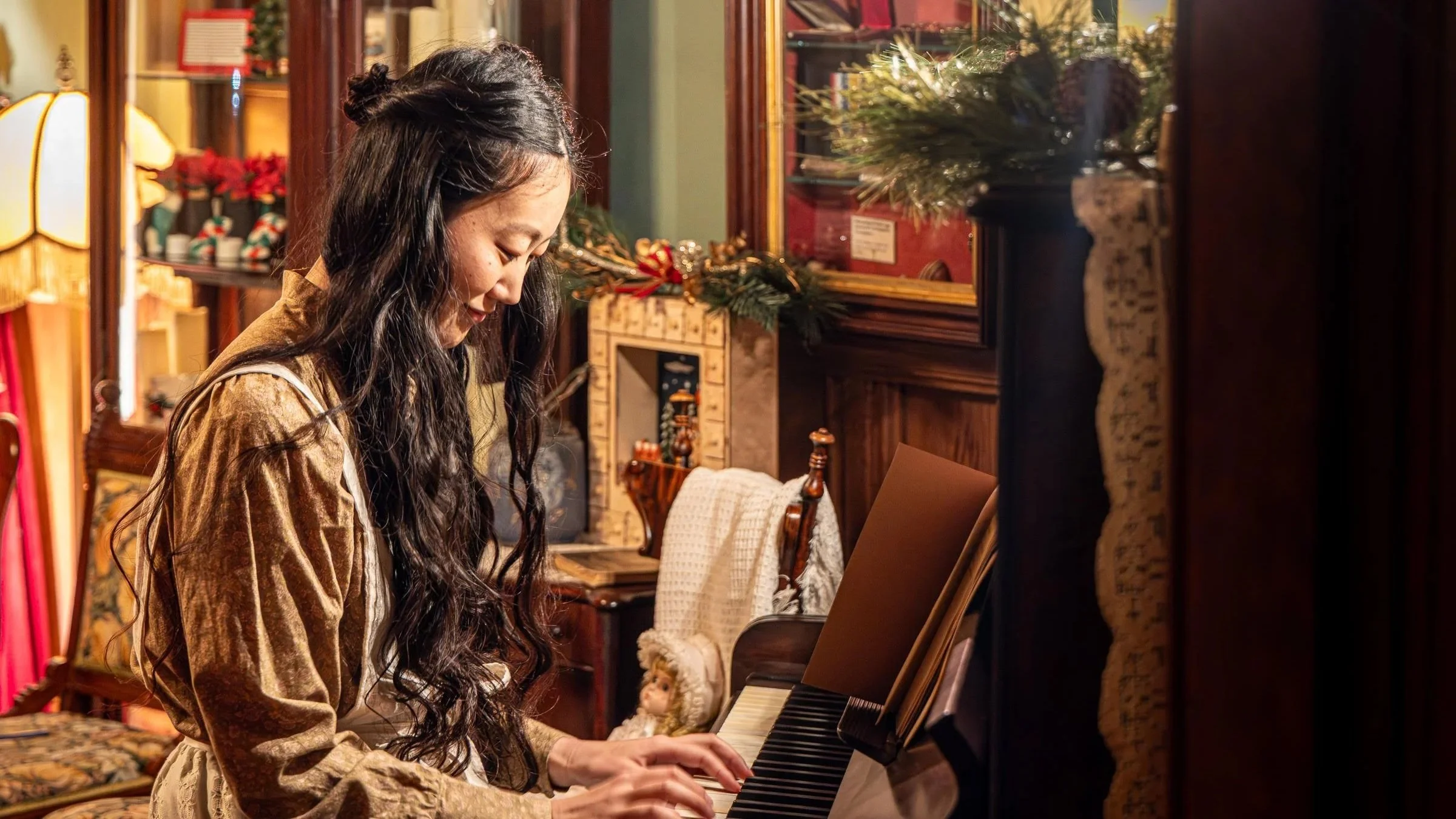Theatre review: The ravenous plant villainess is just the start of the fun in an enjoyably evil Little Shop of Horrors
Strong comedic performances, catchy songs, and over-the-top visual design make Arts Club opener a blast
Tenaj Williams in Little Shop of Horrors. Photo by Pink Monkey Studios
Little Shop of Horrors is at the Stanley Industrial Alliance Stage until October 8
YOU MAY ENJOY a little chuckle the next time you tend to your plants if you see the Arts Club Theatre Company’s production of Little Shop of Horrors. This comedic horror musical has been reimagined with an enjoyably evil and stylish diva of a plant, and a combined cast and creative team of B.C. and Alberta talent in a coproduction with Edmonton’s Citadel Theatre. The result is a delightfully entertaining production under the direction of Ashlie Corcoran that goes wildly over-the-top and leans into campiness at full-force.
Little Shop of Horrors is the work of book writer and lyricist Howard Ashman and music composer Alan Menken—the same team who wrote such Disney classics as The Little Mermaid, Beauty and the Beast, and Aladdin. That means there are strong songs in this show that exude familiar shades of Disney.
The story is set in an urban Skid Row in the 1960s, where we meet Seymour and Audrey, two young coworkers in a sleepy flower shop. Seymour is a poor orphan with a huge crush on Audrey, and Audrey is kind-hearted to a fault, reluctant to leave an abusive relationship. When the shop’s owner, Mr. Mushnik, decides to shut down the struggling store, Seymour brings out a strange, Venus flytrap–like plant he’s been keeping in the back. It instantly boosts business, and Seymour lets slip that he’s named the plant Audrey II—obviously in tribute to his crush.
There’s one problem: Audrey II won’t grow and frequently wilts. When Seymour inadvertently discovers the one thing the plant thrives on—human blood—the stage is set for carnage. To complicate matters, Seymour achieves mini-celebrity stardom for being the plant daddy of the fiercely-growing Audrey II, and this coincides with a promising romantic relationship with Audrey.
Tenaj Williams is endearing as the hapless Seymour, conflicted by his love for Audrey and ending the blood-thirsty rage of Audrey II, as expressed in his solo “Sudden Changes”. A wonderful match for Williams, Synthia Yusuf is equally charming as the sweet and naive Audrey. Her rendition of “Somewhere That’s Green” is heartfelt and wistful, offering echoes of Ariel’s “Part of Your World” in The Little Mermaid. Together, Yusuf and Williams are an adorable couple to root for as they find themselves combatting diabolical villains of both the human and botanical species.
But let’s talk about the diva here that unapologetically steals the spotlight—Audrey II. Puppet-builder Amy Harris, in collaboration with set designer Beyata Hackborn, has conjured a larger-than-life, frighteningly human-like monster—or shall we say villainess. Audrey II is hyper-feminized and threatening with huge pink lips, rose petals adorning her “face”, and vicious teeth. We see multiple versions of her throughout, starting with a seemingly benign baby one, and eventually a giant, ravenous monster.
Kudos must be given to the duo of Madeleine Suddaby and Braydon Dowler-Coltman for bringing Audrey II to life. Suddaby provides a deliciously evil and soulful voiceover, belting out songs such as “Feed Me (Git It)” and “Suppertime”. Meanwhile, puppeteer Dowler-Coltman transforms the Audrey II puppet into a living, breathing creature that revels in wickedness. We see her throw her head back, wave her reptile-like tongue around, and reach her leaves out to taunt the audience. Every action synchs seamlessly with Suddaby’s vocal delivery.
John Ullyatt is wonderfully maniacal as Audrey’s sadist boyfriend and also wears multiple hats, constantly changing costumes and embodying different quirky personas. The trio of Ivy Charles, Rochelle LaPlante, and Ali Watson nicely carry the audience through the show, commenting on the action through sassy doo-wop numbers performed to Gianna Vacirca’s fun, animated choreography.
Set designer Hackborn and lighting designer Rebecca Picherack have crafted a Skid Row setting that offers just the right amount of grittiness, with neglected trash cans and decrepit apartment buildings surrounding the flower shop. Use of a revolving stage keeps the show’s action in motion both in and outside the shop. Just as Audrey II continues to evolve throughout the show, so do the aesthetics of the shop and Audrey’s outfits—a direct effect of Seymour’s growing success rubbing off. Thanks to costume designer Carmen Alatorre, an array of 1960s designs not just for Audrey, but for the company, livens up the show with pops of colour and style to burn.
Ashman and Menken’s score sounds excellent here, led by the strong vocals of Williams, Yusuf, and Suddaby, and a five-member band under the baton of musical director Cailtin Hayes. Dialect coach Adam Henderson has ensured the cast has a consistent Bronx-style accent.
To the squeamish, rest assured that this isn’t an immersive show. There’s no need to fear fake blood splattering out into the audience or performers invading your space. Still, the onstage action is so riotously fun and unnerving that you may find yourself on the verge of hiding your eyes while laughing at the same time. And the next time you have woes about your plant situation at home, you can take comfort knowing that things can’t get worse than the trials Audrey II puts her owner through. Little Shop of Horrors is a wild ride.













